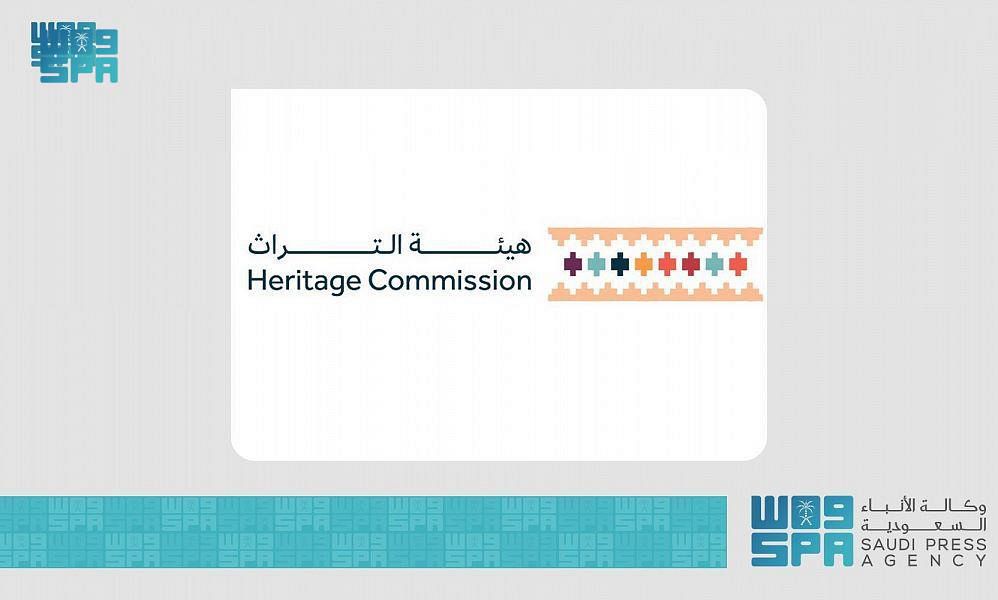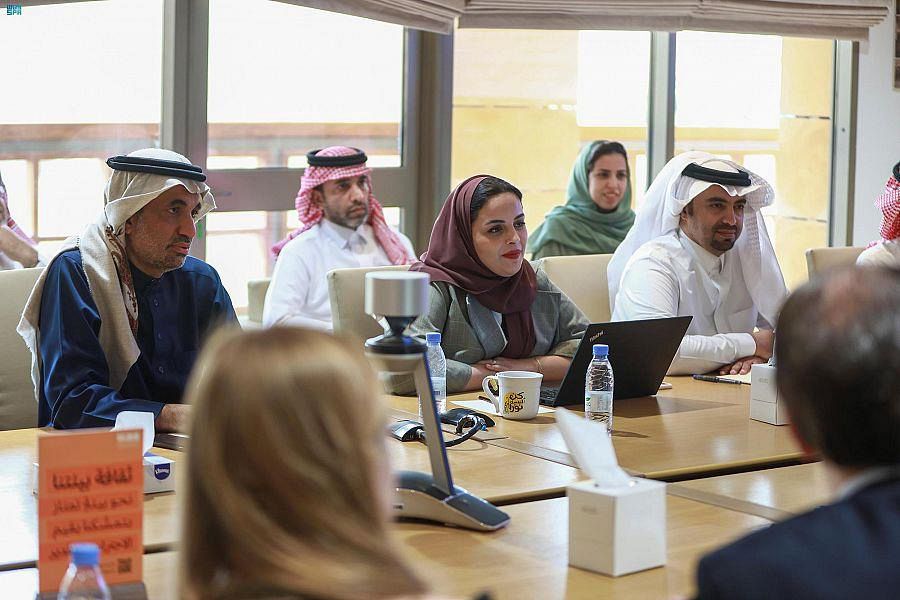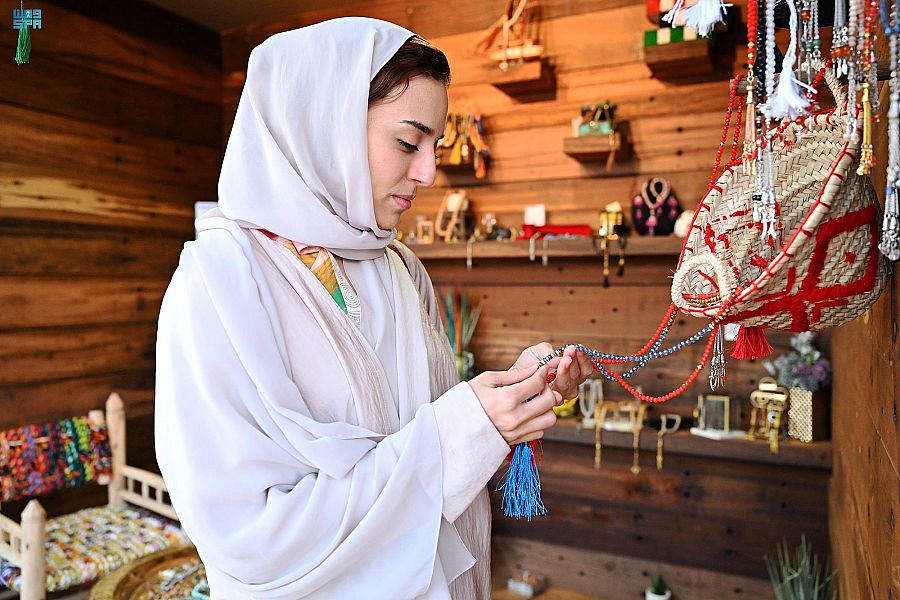
1111
RIYADH — On April 8 of each year, the world celebrates World Heritage Day under the patronage of the United Nations Educational, Scientific and Cultural Organization (UNESCO) and World Heritage Center, to commemorate international efforts to protect and support human heritage.
The day is also marked to raise awareness of the importance of preserving our heritage from any dangers threatening its existence, due to the high cultural value of the world heritage which tells the path of humanity through history.
Saudi Heritage Commission participates in this pivotal role in various cities and regions of the Kingdom of Saudi Arabia, through existing and completed projects that serve the tangible and intangible national heritage.
As the authority’s sole body responsible for managing the heritage sector in Saudi Arabia since it was established by the Cabinet in the February of last year it functions as an agency affiliated with the Ministry of Culture within the framework of the National Strategy for Culture emanating from the Kingdom"s Vision 2030.
Since its inception, the Heritage Commission has worked on strategic projects related to the protection of national heritage, through which it sought to organize work in service of the heritage according to specific and concentrated programs, including the project for restoration and rehabilitation of urban heritage buildings that have architectural and historical value in the center of Riyadh under the directives of Crown Prince Muhammad Bin Salman, deputy prime minister and minister of defense.
The commission works in addition with the Center for the Protection of the Underwater Cultural Heritage in the Red Sea and the Arabian Gulf announced by Prince Badr Bin Abdullah Bin Farhan, minister of culture and chairman of the Board of Directors of the Heritage Commission, during the culture ministers meeting at the G20 summit hosted by the Kingdom of Saudi Arabia.
The projects that the commission is working on to serve the heritage sector include the project of documenting and studying stone constructions in the Kingdom of Saudi Arabia, in cooperation with relevant local and international institutions and agencies and the urban heritage building classification project, one of the main outputs of the digital national heritage registry for the urban heritage in the Kingdom of Saudi Arabia.
The projects also include completing the procedures for establishing the Saudi Trade and Crafts Company and the signing of a cooperation agreement with the Sharqia Development Authority to promote tangible and intangible heritage, which collectively expresses national efforts to protect and develop heritage.
In its first year, the Heritage Commission has succeeded in registering a number of heritage and cultural sites locally and in international organizations, including the registration of the old oil pipeline “Tabline” in the National Industrial Heritage sites as the first industrial heritage site to be officially registered in the Kingdom of Saudi Arabia, in addition to registering Al-Ahsa Oasis in the Guinness Book of Records as a stand-alone oasis in the world.
At the level of Saudi heritage sites registered in the UNESCO World Heritage List, Saudi Arabia has five archaeological sites registered in UNESCO, including the Archaeological Site of Al-Hijr; Al-Turaif neighborhood in Diriyah; historic Jeddah; Rock Art in Hail; and Al-Ahsa Oasis.
As for the Saudi heritage registered in the Representative List of Intangible Cultural Heritage at UNESCO, Saudi Arabia has eight registered heritage elements including the Saudi Ardah; the Majlis; Arabic Coffee; the art of Mizmar; Falconry; Al-Qatt Al-Asiri; the palm tree, and the weaving of Al-Sadu.
The commission has worked on archaeological discoveries in various regions of Saudi Arabia, most importantly was the discovery of footprints of humans, elephants, and predatory animals in the vicinity of an ancient, dry lake on the outskirts of Tabuk, dating back more than 120,000 years.
This is in addition to the discovery of stone installations in the Nafud desert that are among the oldest stone traps in the world dating back more than 7,000 years, and the discovery of stone tools dating back to the Paleolithic period (Assyrian civilization) in Shuaib Al-Adgham, east of Qassim region.
The Heritage Commission has devoted great efforts to the educational aspect for those interested in and belonging to the heritage sector in Saudi Arabia. The commission organized a training program for craftsmen of both genders, which was conducted remotely in cooperation with Google Skills, in addition to organizing several virtual meetings with specialists in the heritage sector.
The number of accepted students in the cultural scholarship program at the Ministry of Culture has amounted to 74 male and female students.
Statistically, according to the Heritage Commission’s records, the number of urban heritage sites registered in Saudi Arabia has reached 1,000 sites, while the total archaeological sites in Saudi Arabia, according to National Antiquities Register, stands at 8,176 sites.
Also, there is a total of 4,415 craftsmen according to the national register of craftsmen, and 12 registered associations specializing in cultural heritage, while the industrial heritage sites that are nominated for registration locally, according to the authority’s statistics, stands at 71 sites, in addition to the restoration of 150 historical mosques in the Kingdom of Saudi Arabia.
By the achievements accomplished, the Heritage Commission sets an example that reflects its dedication to preserve and protect the national heritage and supportive element for its participation in the celebration of the World Heritage Day, due to the importance that Saudi heritage possesses, and its connection to common human history, its depth, and diversity, which the organization seeks through its various efforts to develop and raise the level of interest in it and protecting it from vanishing. — SPA











